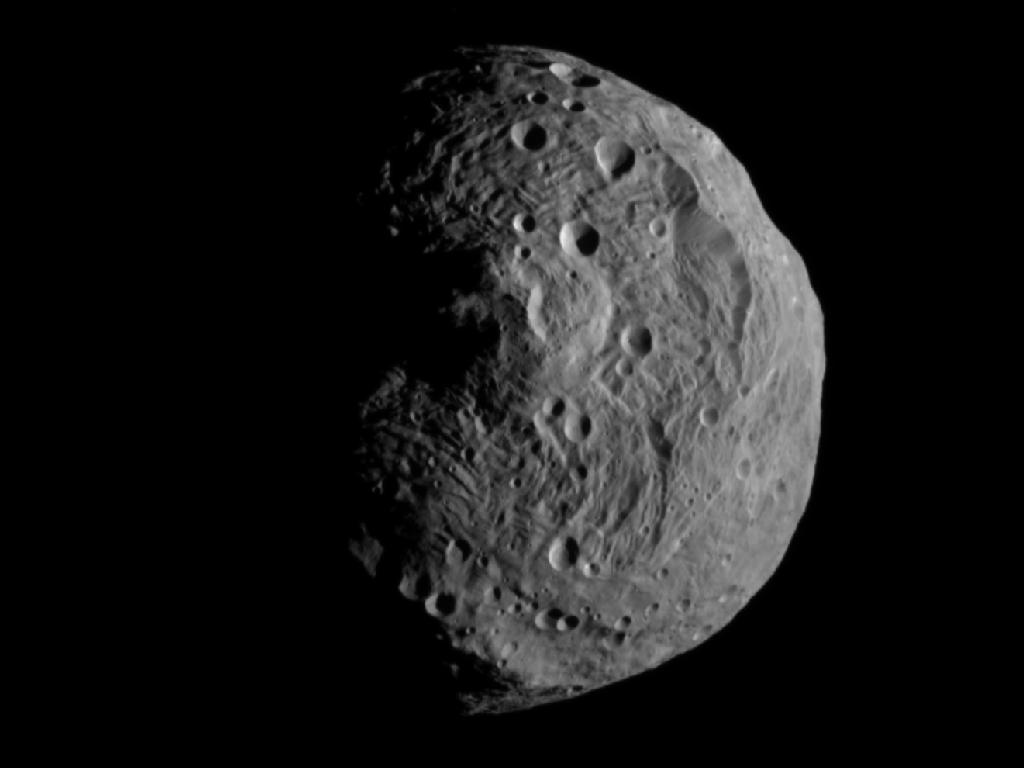NASA's Dawn Spacecraft Says Goodbye to Giant Asteroid Vesta

NASA's Dawn probe has departed the huge asteroid Vesta, its orbital home for the past year, to begin a journey to its next destination: the dwarf planet Ceres.
Dawn's asteroid-mapping mission aims to shed light on the evolution of our solar system by studying huge space rocks, which scientists think are its leftover building blocks. Vesta, which is the solar system's brightest asteroid, and Ceres are chunks of material that might have clumped with other matter to form full-fledged planets under other circumstances, scientists say. Ceres is the largest asteroid in the solar system and is so large it is considered to be a dwarf planet.
The $466 million Dawn probe launched in 2007 and arrived in orbit around Vesta on July. 15, 2011. Today (Sept. 5) at about 2:26 a.m. EDT (11:26 p.m. PDT on Sept. 4), it escaped the bonds of Vesta's gravity to begin the years-long trip to Ceres.
Before leaving Vesta behind, Dawn snapped some spectacular farewell photos of the huge space rock that revealed a surface only half-lit by sunlight and covered in craters. NASA also released a greatest hits video of Dawn's discoveries at Vesta from the last year. [See the last photos and video of Vesta by Dawn]
"As we respectfully say goodbye to Vesta and reflect on the amazing discoveries over the past year, we eagerly look forward to the next phase of our adventure at Ceres, where even more exciting discoveries await," Robert Mase, Dawn project manager at NASA's Jet Propulsion Laboratory in Pasadena, Calif., said in a statement.
While at Vesta, Dawn compiled the first map of the giant 330-mile-wide (530 kilometers) asteroid body, revealing a geologic landscape that scientists call "exotic and diverse." Dawn spotted two gigantic craters on the weathered surface of Vesta, and determined that the asteroid has an iron core.
It will take Dawn about 2 1/2 years to reach the 590-mile-wide (950 km) Ceres, where it is expected to arrive in 2015. The spacecraft uses an ion propulsion system that allows it to make major course changes in deep space.
Get the world’s most fascinating discoveries delivered straight to your inbox.
Dawn used its xenon ion engine to enter orbit around Vesta last year and make its departure today. It will use the same engine to make its way to Ceres and enter orbit around the dwarf planet in February 2015.
When Dawn arrives at Ceres, it will be the first spacecraft ever to orbit two bodies in the asteroid belt that encircles the sun between the orbits of Mars and Jupiter.
Follow SPACE.com on Twitter @Spacedotcom. We're also on Facebook & Google+.





